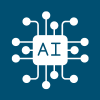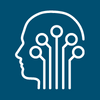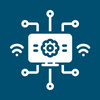IT pros must actively acquire new skills to keep up with evolving technology. These in-demand skills will keep you competitive and functioning well in your IT career, regardless of what the future holds.
24 IT skills to learn
As an IT professional, this is a time for you to level up your tech skill sets by obtaining specific knowledge. If you choose to maintain the status quo, you risk losing relevance in your field. Below are some of the top IT skills in demand this year that you could add to your resume and get you one step closer to reaching your IT goals.
By building these skills, IT pros can add maximum value to any project they contribute to. They may even see increased income as a result of upskilling.
Quick facts about these IT skills
The CompTIA research team identified the top skills based on an analysis of job posting data from Lightcast, which covered the 12 months ending on December 31, 2023. We’ve categorized them by the IT framework, which divides IT functions into four pillars:
- Infrastructure
- Development
- Data and Analytics
- Cybersecurity
This list also contains additional professional skills that can be added below any component. Each component represents different levels of skills you can continue to learn to further any IT goal.
In October 2024, active job postings for tech positions in the United States totaled over 528,000, including almost 223,000 postings newly added by employers, according to the CompTIA Tech Jobs Report.
What skills are most in demand in the IT industry?
Here are 24 popular IT skills that you can seize to unlock your potential and advance your IT career.
Infrastructure
 1. Artificial Intelligence (AI)
1. Artificial Intelligence (AI)
Before diving into the functional pillars and professional skills, the newest skill on the list reflects one of the most disruptive technologies ever to hit businesses. Modern artificial intelligence (AI), especially the most recent addition of generative AI, is poised to change the way work is done. All technology professionals will have to understand the way AI works, from the data used for input to the probability-based output. Read more about AI.
 2. Technical support
2. Technical support
There is a reason many IT pros begin their careers in technical support. The troubleshooting and problem-solving skills honed at the help desk give you a solid foundation that you’ll use again and again throughout your career, no matter what specialty you go into. Read more about technical support.
 3. Networking
3. Networking
All the digital data that organizations use runs through networks, so a well-rounded IT pro knows that it is important to understand the technology behind computing networking. In addition to the physical hardware that provides the foundation, modern networks rely heavily on software to segment and control traffic flow. Read more about networking.
 4. Cloud computing
4. Cloud computing
As remote work has increased, so has the demand for cloud computing. Cloud computing skills—such as configuration, deployment, security, management, and troubleshooting—are essential for IT pros. This includes everything from end-user support for software as a service (SaaS) solutions to analyzing, managing, maintaining, and deploying cloud platforms like Microsoft Azure or Amazon Web Services (AWS). Read more about cloud computing.
 5. Linux
5. Linux
This year, organizations are relying on IT pros to know how to operate Linux successfully. Tech workers should start mastering basic maintenance, installation and configuration of workstations, networking, and understanding of the Linux command line now.
Development
 6. Programming languages
6. Programming languages
To say that understanding programming languages—such as Java, JavaScript, C++, and Python—is an IT skill currently in demand is an understatement. Programming languages touch nearly every IT job role, so IT pros would benefit from strengthening these skills.
 7. Web development
7. Web development
Most software developers work on web applications. This means that in addition to the specific programming language they are using, they need to understand how software works on the Internet, including the front end in the browser, the back end on the server, and the optimization needed for mobile devices.
 8. Quality assurance
8. Quality assurance
Someone who does quality assurance uses data analytics to identify issues and opportunities in products that are created by a factory or business process. They make sure things are done right, minimizing errors and vulnerabilities.
 9. User experience (UX)
9. User experience (UX)
Proper UX design is valuable because it can help to increase productivity, decrease support costs, and boost customer retention and acquisition. Each of these benefits is attractive to organizations navigating another challenging year and striving to create a healthier bottom line. IT pros can learn UX design—such as knowledge of researching target markets, visual design skills, coding, and project management skills—to establish themselves as experts in the tech industry.
 10. Machine learning (ML)
10. Machine learning (ML)
Not every software developer will be directly coding foundational AI algorithms, but more and more software applications will feature machine learning (ML) to some degree. Developers should be aware of different ML techniques and libraries such as TensorFlow, PyTorch, and Pandas.
Data and analytics
 11. Database administration
11. Database administration
When configuring and maintaining the database management system or updating database code for upcoming new technology, a database administrator manages all aspects of an organized database environment. A highly used programming language, Structured Query Language (SQL), is used in data administration. SQL is the standard programming language for relational databases, and IT pros must know how to structure and manage these databases. Those wanting to move into a database administrator role should make it their mission to learn SQL inside and out.
 12. Data analysis
12. Data analysis
An IT pro who is well-versed in data analytics can examine data sets and reach conclusions to help their organization get better results. As a top IT skill in demand this year, it is vital that tech specialists learn the art of data analytics. Gaining some of the skills listed earlier—such as machine learning and programming languages—will strengthen your data analytics skill set. Read more about data and analytics.
 13. Data visualization
13. Data visualization
Data sets can be complex and hard to understand. Organizations need people who can analyze them and create data visualizations to tell the story of what the data means and why stakeholders should care. Data visualization helps guide decision-making across the organization.
 14. Data science
14. Data science
Organizations need employees who can interpret raw data and transform it into usable feedback that data analysts can use to guide decision-making. Learning to work with a variety of programming languages (SAS, R, and Python, for example) and learning to build models using historical data can help IT pros take data operations to the next level. Read more about data science.
 15. Big data
15. Big data
Big data refers to using new technology tools to handle data that previously could not be handled with existing tools. IT skills in demand in 2022 that are related to big data include effective problem-solving skills, data handling skills, and an understanding of programming languages. You can advance your career by pursuing these competencies and utilizing these tools.
Cybersecurity
 16. Information security
16. Information security
Nearly every IT pro (and many business professionals) needs to understand the basics of information security. All technical work needs to be done with security in mind, and many IT pros will choose a career in cybersecurity by starting with fundamental knowledge.
 17. Risk analysis
17. Risk analysis
Risk analysis is the assessment of risks and vulnerabilities that could negatively impact an organization. With more cybercrime than ever before, cybersecurity skills like risk identification, analysis, and management help IT pros keep organizations’ sensitive data safe.
 18. Cybersecurity analytics
18. Cybersecurity analytics
Cybersecurity analytics is at the intersection of cybersecurity and data analytics. In a cloudy world without secure perimeters, there is a critical need to secure data. This includes threat intelligence, intrusion detection and response, risk analysis, and data modeling.
 19. Penetration testing
19. Penetration testing
Penetration testing is a way of finding vulnerabilities in your systems before a cybercriminal does. While cybersecurity analysis is considered a defensive strategy, penetration testing would be an offensive strategy. Both sides work together to protect the organization in different ways.
 20. Compliance
20. Compliance
As the technology industry has become a massive economic force, it is drawing more attention from government regulators. More and more, organizations will need to maintain compliance with regulations covering digital operations, and IT pros with this knowledge can help guide this process. Learn more about compliance.
Additional professional
 21. Professional skills
21. Professional skills
In addition to technical skills, IT pros should bring a variety of professional skills to the table this year. Adaptability, empathy, teamwork, communication, and active listening are just as important to employers as technical skills are. With that in mind, building and strengthening your professional skills should be a top priority for IT specialists.
 22. Project management
22. Project management
Project management skills can be applied across the board and make you better at your job regardless of the size of the projects you’re managing. Understanding project management methodologies (such as Agile), as well as learning how to manage the project lifecycle and communicate with stakeholders, will add efficiency and effectiveness to your work. Learn more about project management.
 23. Business skills
23. Business skills
While professional skills refer to how you behave, business skills are more about what you know. As an IT pro, the more you understand how your organization functions, what the business priorities and goals are, and what challenges employees and end users face, the better you can recommend solutions.
 24. Automation
24. Automation
Automation boosts efficiency, which is exactly what many companies need. IT pros can implement it at every level, from the help desk to cybersecurity. Scripting and tools like Ansible can help IT pros turn routine tasks into automated processes that free up resources for more innovative work.
How to get the IT skills you need this year
Looking at all the IT skills needed for this year may feel overwhelming. Creating a plan to obtain the technical skills you need will help.
CompTIA offers a wide array of IT certifications that validate many of the in-demand skills from this list. Start with CompTIA training solutions, like CompTIA CertMaster Learn, and then prove your knowledge to employers by getting certified.
Earning one of the following IT certifications can help validate your new skills to employers:
- CompTIA A+ covers problem-solving, troubleshooting, virtualization, and other foundational IT skills that will serve you throughout your IT career. Being a core element in kickstarting your IT career, CompTIA A+ holds a large part in technical support, which lands under the infrastructure pillar.
- CompTIA Security+ covers the baseline skills necessary to perform core security functions, including those related to secure server design, application security, and software development. Cybersecurity is an important pillar that includes all the elements involved with CompTIA Security+.
- CompTIA Server+ covers automation, scripting, and virtualization to optimize server management as well as troubleshooting and cloud computing as it relates to server administration and management. In the development pillar, CompTIA Server+ plays a large role in gaining the skills to further assess and increase productivity through the development of mobile tools and more.
- CompTIA Cloud+ covers cloud configuration, deployment, security, management, and troubleshooting. With CompTIA Cloud+ comes cloud computing. This can be found under the infrastructure pillar.
- CompTIA Linux+ covers common tasks in major distributions of Linux, including the Linux command line, basic maintenance, installing and configuring workstations, and networking. The infrastructure pillar lists Linux as an individual skill to explain the reliance needed behind it.
- CompTIA Project+ covers the basic concepts needed to successfully manage small- to medium-sized projects. Find the skills you need under the additional professional skills pillar.
- CompTIA Data+ covers data concepts, data mining, data analysis, visualization, and data governance to help you develop and promote data-driven business decision-making. These skills are involved with the data and analytics pillar.
- CompTIA DataSys+ is a foundational level data management certification that focuses on the logistics of data administration and security. These skills are involved with the data and analytics pillar.
By earning one or more of these IT certifications or starting on a new career path, you can develop the top IT skills in demand. As a result, you’ll gain ground in your career during what is sure to be a year of rapid transition in the IT industry.
Get the in-demand skills you need with CompTIA certifications and training solutions.